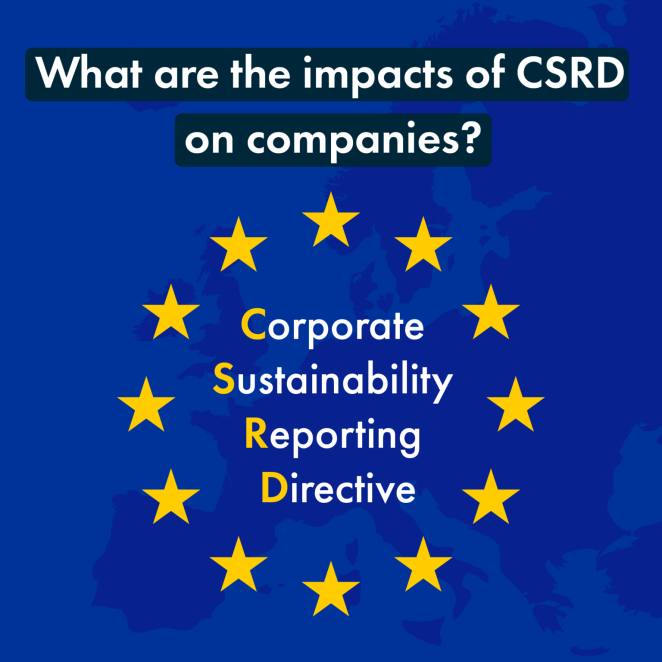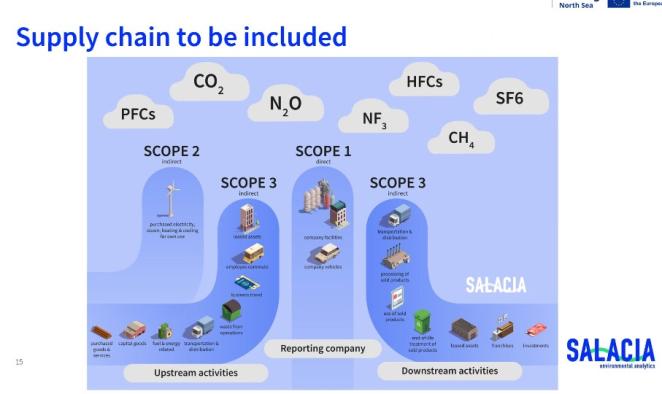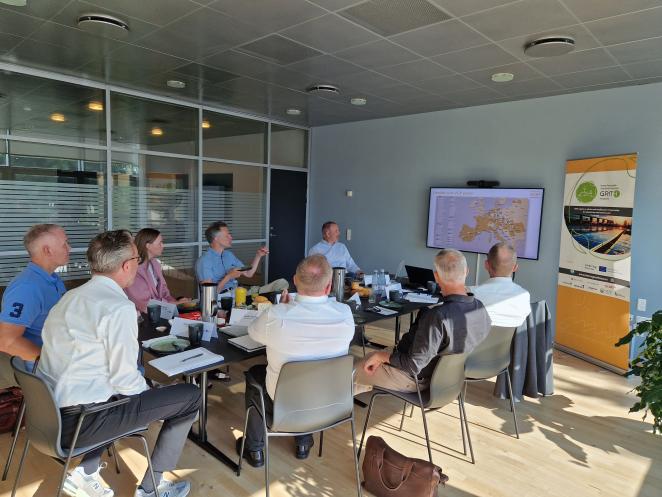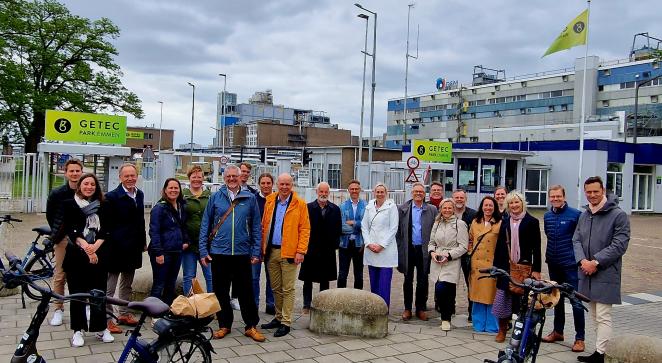On 5th September GRITH held an online workshop on the Corporate Sustainability Reporting Directive to investigate how this European legislation can nudge businesses and industrial sites to do more in the energy transition.
GRITH partners previously discussed the fact that companies are currently dealing with many issues related to future-proofing their businesses and often do not have the internal knowledge, experience or manpower to focus on the energy transition. Searching for a suitable support mechanism, the consortium want to investigate the potential value of using the Corporate Sustainability Reporting Directive (CSRD) as an incentive for engaging with stakeholders

What is the CSRD?
The Corporate Sustainability Reporting Directive (CSRD) is European legislation that requires companies to disclose information about the impact of their activities on people and the environment, as well as the risks and opportunities arising from social and environmental issues.
All listed companies in the EU with more than 500 employees are already covered by the CSRD. These companies are required to report consistent with the European Sustainability Reporting Standards (ESRS) from 2024. Other large companies will have to report in line with the CSRD from fiscal year 2025. In the Netherlands for example, some 3,500 companies fall under this category. Standards are voluntary for SMEs at the moment – covering similar points but with a lot less detail. However, companies struggle with a lack of internal knowledge, experience, data and manpower to do this.

High interest GRITH workshop
A wide variety of stakeholders joined this online workshop, indicative of the high interest in this subject. Firstly, Kees Kerstens from Dutch specialist company Salacia Solutions -shared the broad strokes of EU legislation and reporting impacting companies as part of EU Green Deal. Zooming in on CSRD Kees explained: “We need to have a clear picture if we are to set real sustainability targets. There are 10 topics relevant to businesses, including work force and climate change, resource use, etc. to be reported on. Transparency is key – say what you do and do what you say.”
Contradictory EU policies on different levels leads to confusion and further complexities on industrial sites. Strategies per country also vary - energy prices and carbon intensity are the current incentives. Now, annual company reporting is shifting towards a compulsory integrated report with quantative and qualitative information.
“Currently the only real obligation in European Sustainability Reporting Standards is to be transparent about your activities - not necessarily prove behavioural change.
“The supply chain is also part of this report so that also includes what’s happening outside the gates – a real challenge for most companies.” Kees added. His advice: “Just do it, report on what you do have, be clear about emissions and create an audit trail. This will improve over time. And involve the most important clients and supply chain.”

GRITH
Life Cycle Assessment
During the second half of the workshop our Danish partners introduced, Nele Teutloff, Life Cycle Assessment specialist from FORCE Technology. Assisted by Chrisitine Bang Kragelund, she shared how the LCA methodology can also help when reporting on sustainable issues.
“Life Cycle Assessment is carried out according to best practice, state of the art software and LCI databases. It covers environment impacts and climate change, and the direct or indirect impacts of products, resources, behaviour of companies.” Data is placed in a life cycle perspective. This is a similar exercise to what is needed for the CSRD so the assessment can also be part of that report.
For the benefit of GRITH, Nele also gave some examples of the effects of an energy grid mix on the carbon footprint of the partner countries – thus impacting the footprint of their companies. The CSRD refers to the greenhouse protocol also being used in the LCA. There is a big potential for the reduction of carbon emissions depending on the energy mix/sources chosen on industrial sites.

How can we help?
Most important question of the day was, how can we help? GRITH is planning a survey amongst the partner countries to get more specifics that could help unravel these issues and map the available assistance for big companies and SMEs. The consortium believes that GRITH could play a guiding role for sites and businesses, signposting the way through the labyrinth of EU, national and regional policies and regulations. Thus, gaining insight into current energy consumption and the opportunities for efficiency and sustainability. Partners are keen to jointly explore where the CSRD incentives could work by offering support in reaching targets and compliance.
This is now on the agenda for the upcoming partner meeting in Dunkirk in November. To be continued!
Read the EU CSRD directive here
